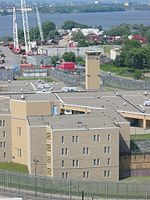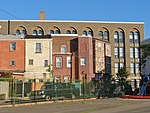USS Edgar F. Coney

USS Edgar F. Coney (SP-346) was an armed tug that served in the United States Navy from 1917 to 1919. Edgar F. Coney was built as a commercial steam tug of the same name in 1904 by John B. Dialogue & Sons at Camden, New Jersey, for the South Atlantic Towboat Company. On 22 September 1917, the U.S. Navy chartered her from her owner – by then Philip Shore of Tampa, Florida – for use during World War I. She was commissioned the same day as USS Edgar F. Coney (SP-346). Assigned to the 3rd Naval District, Edgar F. Coney was based at Tompkinsville, Staten Island, New York. She carried out towing duties in the New York City area for the remainder of World War I and into 1919. Edgar F. Coney was decommissioned on 5 July 1919 and returned to her owner the same day. She returned to commercial service. The Tug sank 28 January 1930 in the Gulf of Mexico in rough seas and high winds 70 miles south east of Port Arthur, Texas. Lost with all 14 hands.
Excerpt from the Wikipedia article USS Edgar F. Coney (License: CC BY-SA 3.0, Authors, Images).USS Edgar F. Coney
North 2nd Street, Camden
Geographical coordinates (GPS) Address Nearby Places Show on map
Geographical coordinates (GPS)
| Latitude | Longitude |
|---|---|
| N 39.959 ° | E -75.121 ° |
Address
North 2nd Street
North 2nd Street
08102 Camden
New Jersey, United States
Open on Google Maps






